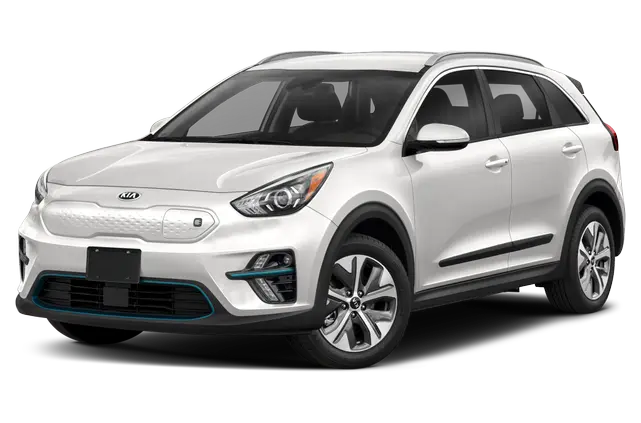If you want to drive electric but still like the safety net of a gas engine, plug-in hybrids are the answer. In 2026, plug-in hybrid vehicles (PHEVs) offer longer electric-only range, better fuel economy, and more options than ever — all without the need for daily charging.
This guide covers the best PHEVs of 2026 across every category: sedans, SUVs, luxury models, and family-friendly picks. Whether you’re trying to save fuel, reduce emissions, or dip a toe into electric driving, these are the plug-ins that make it easy.
What Is a Plug-In Hybrid?
A plug-in hybrid vehicle (PHEV) combines:
- An electric motor and battery (for driving short distances on electricity)
- A gasoline engine (that kicks in when the battery is depleted)
Unlike traditional hybrids, you can plug in at home or public chargers to drive using electricity alone. Most PHEVs in 2026 offer 25–50 miles of electric range, which covers most daily commutes.
Why Choose a PHEV in 2026?
- Electric driving for daily trips
- Gas backup for long drives — no range anxiety
- Qualifies for federal and some state tax credits
- Lower fuel bills and emissions
- No need for fast charging infrastructure
Best Plug-In Hybrid Vehicles in 2026 — Ranked by Value, Range, and Usability
1. 2026 Toyota Prius Prime
Category: Compact Hatchback
Electric Range: 45 miles
Combined MPG (hybrid mode): 52 MPG
Starting Price: $33,500
Why It Leads: The redesigned Prius Prime combines sleek styling, the best fuel economy in the segment, and strong electric range — all at a budget-friendly price.
Highlights:
- Qualifies for $7,500 federal tax credit
- Available tech like digital rearview mirror
- Compact and city-friendly
2. 2026 Hyundai Tucson Plug-In Hybrid
Category: Compact SUV
Electric Range: 33 miles
Combined MPG (hybrid mode): 35 MPG
Starting Price: $39,900
Why It’s Practical: Roomy, smooth, and reliable, the Tucson PHEV delivers electric flexibility with SUV space and comfort.
Highlights:
- Eligible for tax credit
- Comfortable ride
- Loads of standard features
3. 2026 Kia Sportage Plug-In Hybrid

Category: Compact SUV
Electric Range: 34 miles
Combined MPG: 38 MPG
Starting Price: $38,500
Why It’s Versatile: Twin to the Tucson PHEV but with a bolder design. Strong feature set and one of the most affordable plug-in crossovers.
Highlights:
- Great warranty
- Standard AWD
- Excellent infotainment
4. 2026 Jeep Grand Cherokee 4xe
Category: Midsize SUV
Electric Range: 26 miles
Combined MPG: 23 MPG
Starting Price: $60,000
Why It’s Different: Combines serious off-road chops with plug-in tech. Ideal for families or adventurers who want low-emission capability.
Highlights:
- Trail-rated performance
- Luxurious interior
- Federal tax credit eligible
5. 2026 Chrysler Pacifica Hybrid
Category: Minivan
Electric Range: 32 miles
Combined MPG: 30 MPG
Starting Price: $49,000
Why It’s Family-Ready: The only plug-in hybrid minivan — with room for seven, electric range for school runs, and gas backup for road trips.
Highlights:
- Rear-seat entertainment optional
- Smooth V6 + electric power
- Big cargo space
6. 2026 Volvo XC60 Recharge
Category: Luxury Compact SUV
Electric Range: 40 miles
Combined MPG: 28 MPG
Starting Price: $58,000
Why It’s Premium: Upscale design meets Scandinavian efficiency. Improved range and features make this a strong luxury PHEV.
Highlights:
- Google-based infotainment
- Excellent cabin design
- Eligible for federal credit
7. 2026 Ford Escape Plug-In Hybrid
Category: Compact SUV
Electric Range: 37 miles
Combined MPG: 40 MPG
Starting Price: $38,000
Why It’s Simple: Easy to drive, easy to own, and one of the longest electric ranges in a non-luxury PHEV SUV.
Highlights:
- User-friendly controls
- Quiet ride
- Competitive pricing
8. 2026 BMW 330e xDrive
Category: Luxury Sedan
Electric Range: 25 miles
Combined MPG: 28 MPG
Starting Price: $50,000
Why It’s Engaging: A sport sedan with electric capability and BMW driving dynamics. Not the longest EV range, but fun and refined.
Highlights:
- Strong acceleration
- All-wheel drive
- Premium interior finishes
9. 2026 Kia Niro Plug-In Hybrid
Category: Subcompact Crossover
Electric Range: 34 miles
Combined MPG: 44 MPG
Starting Price: $35,000
Why It’s Efficient: Great for urban drivers who want a compact, plug-in vehicle with strong hybrid mileage when the battery runs out.
Highlights:
- Easy to park
- Stylish interior
- Affordable to own
10. 2026 Mitsubishi Outlander PHEV
Category: Midsize SUV
Electric Range: 38 miles
Combined MPG: 26 MPG
Starting Price: $42,000
Why It’s Unique: One of the few three-row plug-in SUVs. It’s not perfect, but offers family-friendly flexibility with good EV range.
Highlights:
- Room for 7
- AWD standard
- Practical layout
Plug-In Hybrid Range Comparison Table (2026)

| Model | Electric Range | Combined MPG | Price | Tax Credit |
| Prius Prime | 45 miles | 52 MPG | $33,500 | Yes |
| Tucson PHEV | 33 miles | 35 MPG | $39,900 | Yes |
| Sportage PHEV | 34 miles | 38 MPG | $38,500 | Yes |
| Grand Cherokee 4xe | 26 miles | 23 MPG | $60,000 | Yes |
| Chrysler Pacifica Hybrid | 32 miles | 30 MPG | $49,000 | Yes |
| Volvo XC60 Recharge | 40 miles | 28 MPG | $58,000 | Yes |
| Ford Escape PHEV | 37 miles | 40 MPG | $38,000 | Yes |
| BMW 330e xDrive | 25 miles | 28 MPG | $50,000 | Yes |
| Kia Niro PHEV | 34 miles | 44 MPG | $35,000 | Yes |
| Mitsubishi Outlander PHEV | 38 miles | 26 MPG | $42,000 | Yes |
Who Plug-In Hybrids Are Best For
✅ Commuters with Daily Drives Under 40 Miles
Charge overnight, drive on electricity all day — save on gas.
✅ Drivers Without Reliable Charging Infrastructure
Gas engine backup means you’re never stuck.
✅ People Who Want EV Tax Credits Without Going Fully Electric
Most PHEVs qualify for $7,500 federal tax incentives.
✅ Families Who Travel
Drive electric locally, use gas on long trips — best of both worlds.
✅ Rural Drivers
Avoid range anxiety in areas with fewer public chargers.
How to Maximize PHEV Ownership Value
- Charge Daily
Plug in at home to use the electric motor as often as possible — that’s where the savings come from. - Take Advantage of Tax Credits
Most PHEVs qualify for the full $7,500 credit — make sure the dealership helps you file properly. - Maintain Like a Gas Car
PHEVs still need oil changes, filter replacements, and periodic hybrid system checks. - Understand Battery Coverage
Most brands include 8-year/100,000-mile hybrid battery warranties. - Monitor Your Range in Winter
EV range decreases in cold temps. Keep your battery warm and precondition the cabin while plugged in.
Plug-In Hybrid vs EV vs Hybrid: 2026 Quick Breakdown
| Feature | Hybrid | Plug-In Hybrid | EV |
| Charging Required | No | Yes (to use electric mode) | Yes |
| Electric-Only Range | Minimal | 25–50 miles | 200–500+ miles |
| Gas Backup | Yes | Yes | No |
| Tax Credit Eligible | Rarely | Yes | Yes |
| Best For | Simplicity | Versatility | Zero-emission lifestyle |
Final Thoughts
In 2026, plug-in hybrids have truly hit their stride. With improved range, generous tax credits, and a variety of styles — from hatchbacks to luxury SUVs — they offer a smart, flexible bridge between gas and electric.
Whether you want to save on fuel, cut emissions, or simply ease into EV life without worrying about charging, the PHEVs on this list make it easy. You’ll drive electric when you want, and keep going when you need.
Looking for the smartest way to drive in 2026? Plug in and power up — the best PHEVs are waiting.






